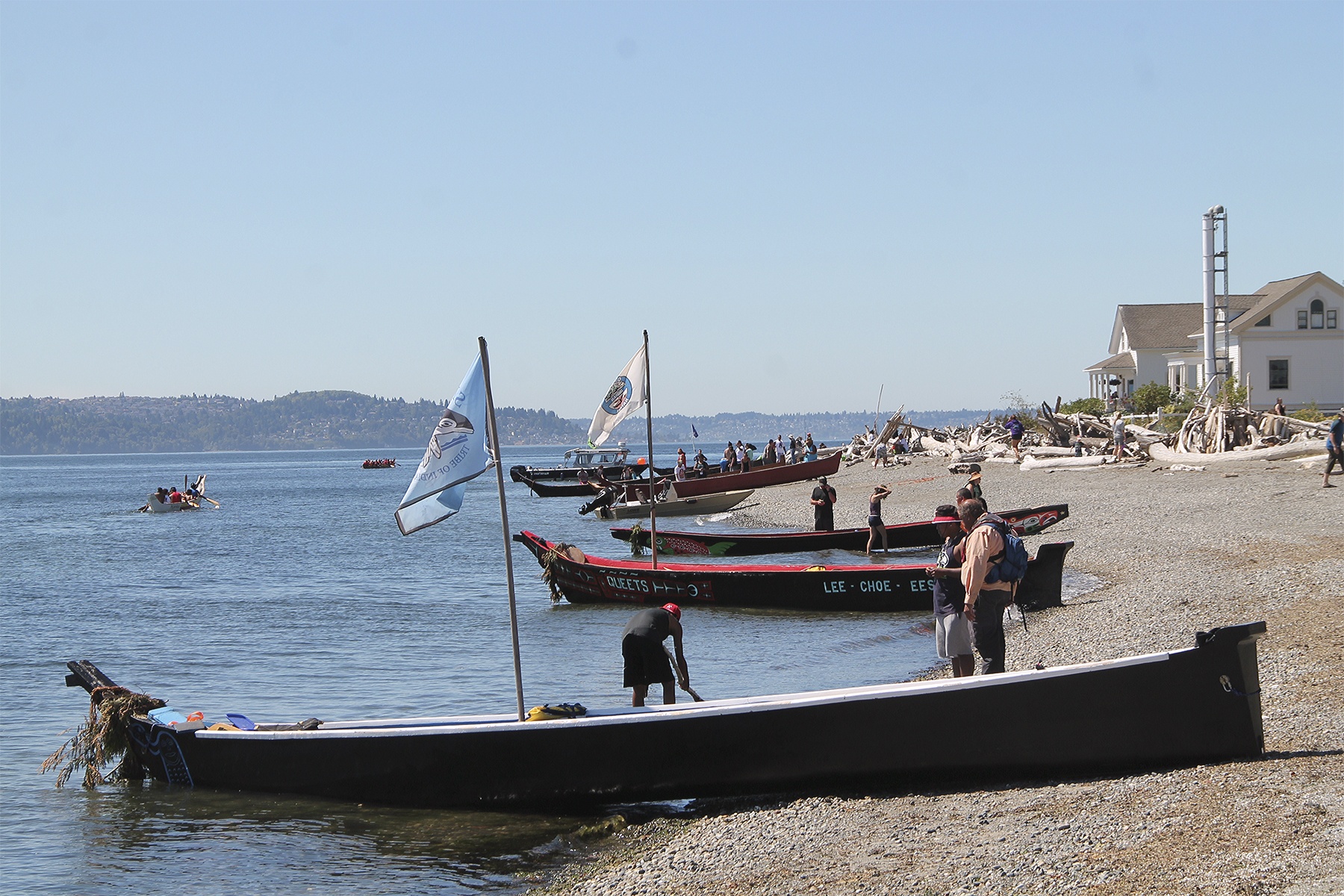Islander Anne Higuera’s two sons ended a nearly two-week long canoe journey on Saturday after paddling 186 miles from Birch Bay to Olympia as part of this year’s annual Native Canoe Journey.
Jackson, 16, and Logan Higuera, 14, both students at Vashon High School, helped pull the Snohomish Nation’s Blue Heron canoe between 12 to 35 miles every day last week on their way to the Nisqually Nation. They were two of hundreds of natives and non-natives participating in the Paddle to Nisqually, Canoe Journey 2016, an annual inter-tribal celebration that holds special meaning and cultural significance for those who participate. The journey’s end point rotates every year among Pacific Northwest Nations, but always consists of a week-long ceremony to conclude the paddle.
The Paddle to Nisqually website notes that the event is designed to bring canoe pullers together for “a personal journey towards healing and recovery of culture, traditional knowledge and spirituality.” It stresses that the journey is “a cultural ceremony, not a festival.”
Around 30 tribes from as far away as Vancouver Island (Ucluelet, T’Souke) and the Olympic Peninsula (Quinault, Quileute) begin the journey at their respective nations. As the canoes move closer to the final destination, the canoes meet up, stopping at different areas every night to ask tribe elders for permission to come ashore, usually in their native language; give gifts, and share stories, songs and dances from their tribe. This nightly sharing of culture is called protocol.
“They get up early, paddle all day, stop, eat and then do protocol,” Amy Higuera said. “It’s a really incredible thing to be a part of. It’s something that they really, really enjoy, and it’s a huge thing to be able to share culture.”
By the time the canoes arrive at the end of their journey (the Nisqually Nation in Olympia this year), there are usually around 100 different canoes, the pullers of which all go through protocol, concluding with a week-long ceremony full of a diverse mix of indigenous groups.
The Canoe Journey’s website states the journey includes over 100 canoes from other native canoe cultures, including Native American tribes, First Nations peoples, Alaska Natives, Inuit, Maori and Native Hawaiians.
Amy Higuera said the canoes that participate are either tribe canoes or belong to canoe families — groups that aim to support natives. Her sons, though born in Seattle, are of California Native descent. Their father, Clarence Higuera, traces his roots back to native tribes around California’s Central Coast.
After moving to the Pacific Northwest in the early 2000s, Logan and Jackson got involved with the Duwamish tribe and met Blue Heron skipper Mike Evans, who is Snohomish, in the process.
“Initially, they were doing singing and drumming, but when they got old enough to start paddling, (Evans) invited them,” she said. “This is the fourth or fifth journey they’ve participated in, and Logan is learning to skipper while Jackson (who is also a member of the Vashon Island Rowing Club) has been lead puller — sitting at the bow of the boat and setting the pace — for this journey.”
As this year’s journeyers traveled through Puget Sound, the event drew attention due to an overnight canoe stop hosted by the Muckleshoot Nation at Alki Beach last week, and an informal rest stop at Vashon’s Point Robinson on Thursday morning. The Blue Heron was one of roughly a dozen boats that were brought onshore to give pullers a brief break before heading on to Point Defiance.
“The intention is that it’s really a journey,” Amy Higuera said. “It’s a huge physical challenge.”
According to organizers, the journey dates back to the Paddle to Seattle in 1989 that was part of Washington State’s Centennial celebration. Before that event sparked a resurgence in Native American canoe culture, the traditions had nearly disappeared.
“Techniques of canoe making and use had largely vanished and fewer and fewer tribal people knew how to pull a traditional canoe,” the website indicates.
After numerous youth paddle events in the 1990s, “a new tradition was well into the making and a cultural resurgence was underway.”
More than 20 journeys have been held since regular journeys began in 1993.



